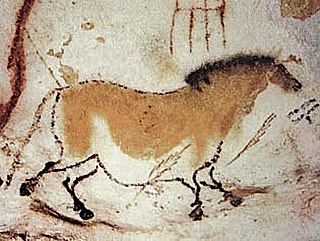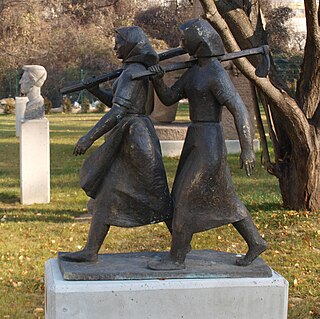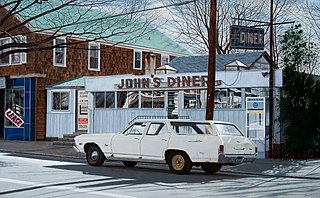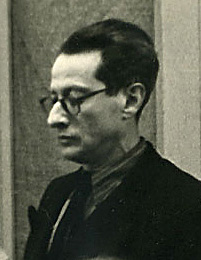Cynical realism is a contemporary movement in Chinese art, especially in the form of painting, that began in the 1990s. Beginning in Beijing, it has become one of the most popular Chinese contemporary art movements in mainland China. It arose through the pursuit of individual expression by Chinese artists who broke away from the collective mindset that existed since the Cultural Revolution. The major themes tend to focus on socio-political issues and events since Revolutionary China (1911) to the present. These include having a usually humorous and post-ironic take on a realist perspective and interpretation of the transition that Chinese society has been through, from the advent of Communism to today's industrialization and modernization.

Contemporary art is the art of today, produced in the second half of the 20th century or in the 21st century. Contemporary artists work in a globally influenced, culturally diverse, and technologically advancing world. Their art is a dynamic combination of materials, methods, concepts, and subjects that continue the challenging of boundaries that was already well underway in the 20th century. Diverse and eclectic, contemporary art as a whole is distinguished by the very lack of a uniform, organising principle, ideology, or "-ism". Contemporary art is part of a cultural dialogue that concerns larger contextual frameworks such as personal and cultural identity, family, community, and nationality.

Chinese art is visual art that, whether ancient or modern, originated in or is practiced in China or by Chinese artists. The Chinese art in the Republic of China (Taiwan) and that of overseas Chinese can also be considered part of Chinese art where it is based in or draws on Chinese heritage and Chinese culture. Early "stone age art" dates back to 10,000 BC, mostly consisting of simple pottery and sculptures. After this early period Chinese art, like Chinese history, is typically classified by the succession of ruling dynasties of Chinese emperors, most of which lasted several hundred years.

Painting is the practice of applying paint, pigment, color or other medium to a solid surface. The medium is commonly applied to the base with a brush, but other implements, such as knives, sponges, and airbrushes, can be used. The final work is also called a painting.
Artists associated with Cynical Realism include Fang Lijun, Liu Wei, [1] and Yue Minjun. [2]
Fang Lijun is an artist based in Beijing. He was born into a wealthy family with a high social status. In the 1990s, there was a cultural movement in China referred to as Cynical Realism of which Fang Lijun was a member. Living in China during this critical time shaped his worldview in terms of his views on art, human values and morality.
Liu Wei is an artist based in Beijing.

Yue Minjun is a contemporary Chinese artist based in Beijing, China. He is best known for oil paintings depicting himself in various settings, frozen in laughter. He has also reproduced this signature image in sculpture, watercolour and prints. While Yue is often classified as part of the Chinese "Cynical Realist" movement in art developed in China since 1989, Yue himself rejects this label, while at the same time "doesn't concern himself about what people call him."










